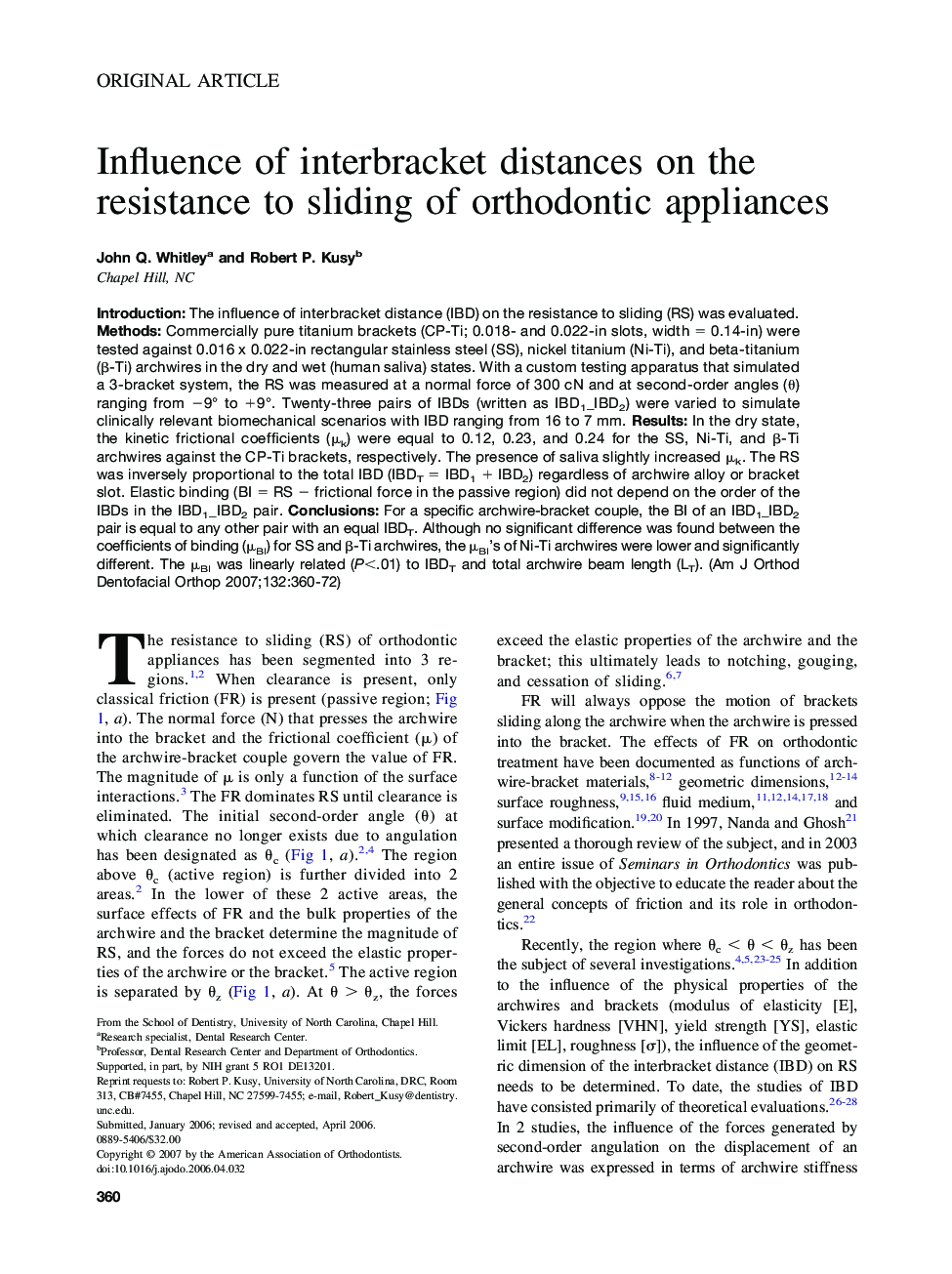| Article ID | Journal | Published Year | Pages | File Type |
|---|---|---|---|---|
| 3118933 | American Journal of Orthodontics and Dentofacial Orthopedics | 2007 | 13 Pages |
Introduction: The influence of interbracket distance (IBD) on the resistance to sliding (RS) was evaluated. Methods: Commercially pure titanium brackets (CP-Ti; 0.018- and 0.022-in slots, width = 0.14-in) were tested against 0.016 x 0.022-in rectangular stainless steel (SS), nickel titanium (Ni-Ti), and beta-titanium (β-Ti) archwires in the dry and wet (human saliva) states. With a custom testing apparatus that simulated a 3-bracket system, the RS was measured at a normal force of 300 cN and at second-order angles (θ) ranging from −9° to +9°. Twenty-three pairs of IBDs (written as IBD1_IBD2) were varied to simulate clinically relevant biomechanical scenarios with IBD ranging from 16 to 7 mm. Results: In the dry state, the kinetic frictional coefficients (μk) were equal to 0.12, 0.23, and 0.24 for the SS, Ni-Ti, and β-Ti archwires against the CP-Ti brackets, respectively. The presence of saliva slightly increased μk. The RS was inversely proportional to the total IBD (IBDT = IBD1 + IBD2) regardless of archwire alloy or bracket slot. Elastic binding (BI = RS − frictional force in the passive region) did not depend on the order of the IBDs in the IBD1_IBD2 pair. Conclusions: For a specific archwire-bracket couple, the BI of an IBD1_IBD2 pair is equal to any other pair with an equal IBDT. Although no significant difference was found between the coefficients of binding (μBI) for SS and β-Ti archwires, the μBI’s of Ni-Ti archwires were lower and significantly different. The μBI was linearly related (P<.01) to IBDT and total archwire beam length (LT).
